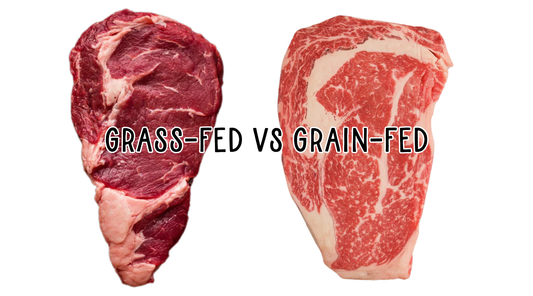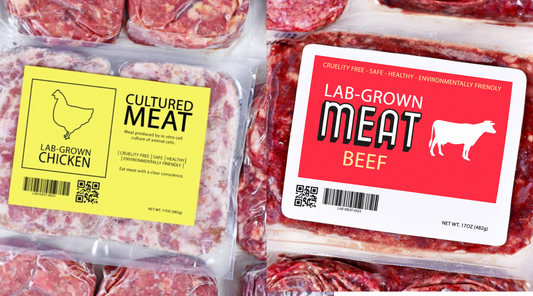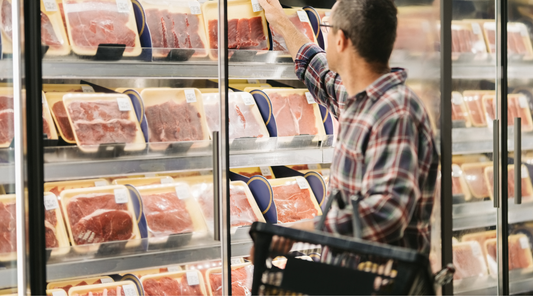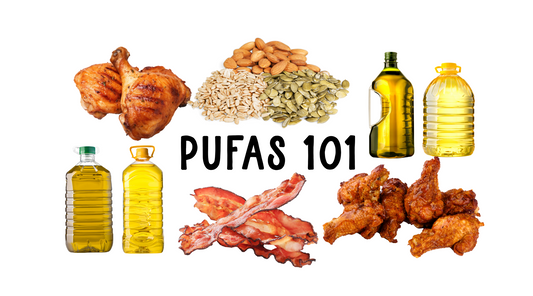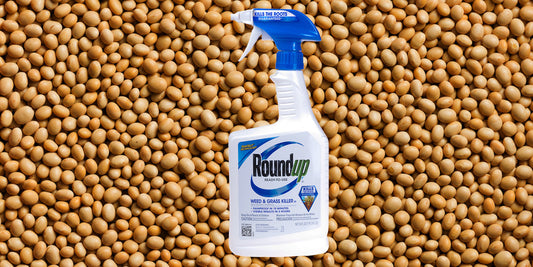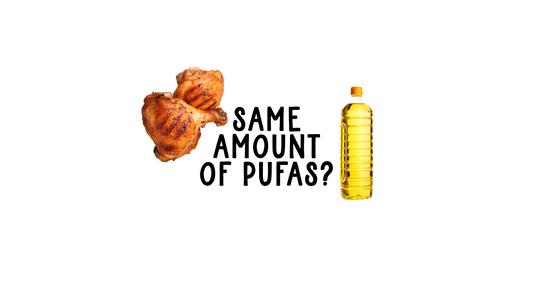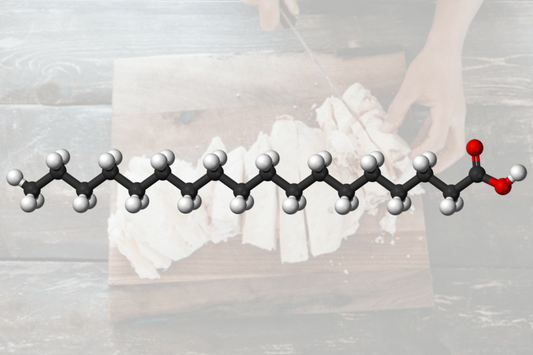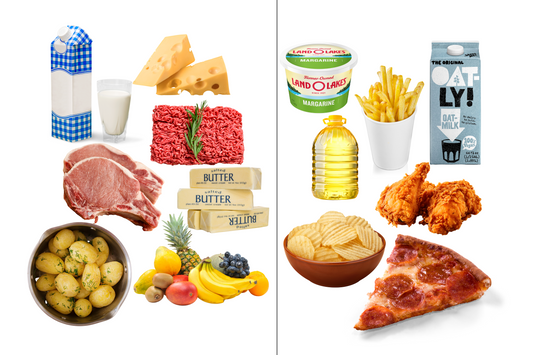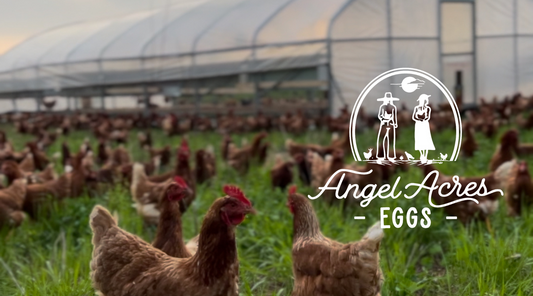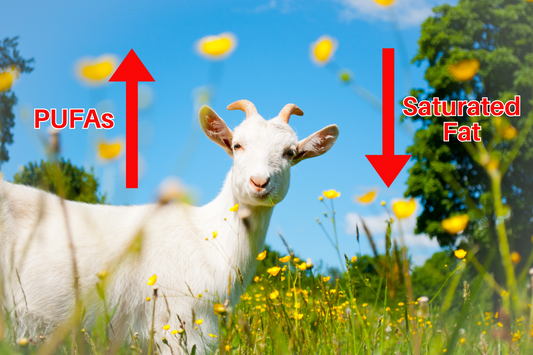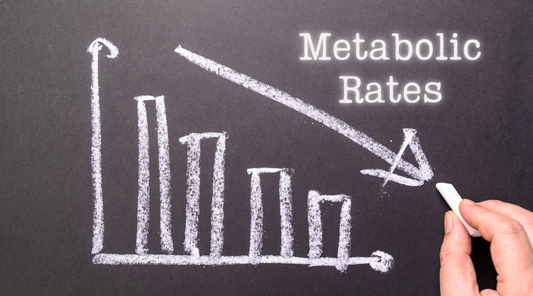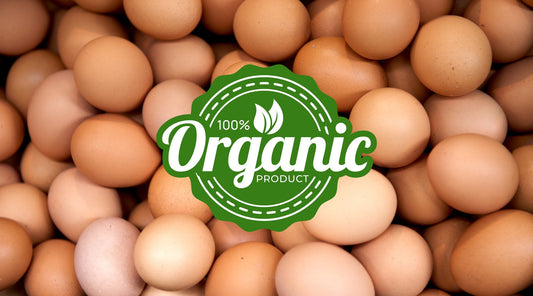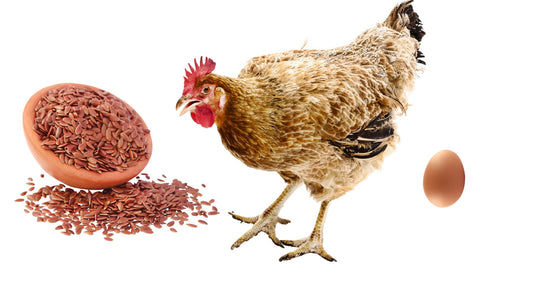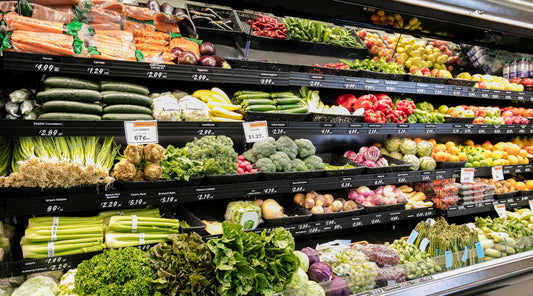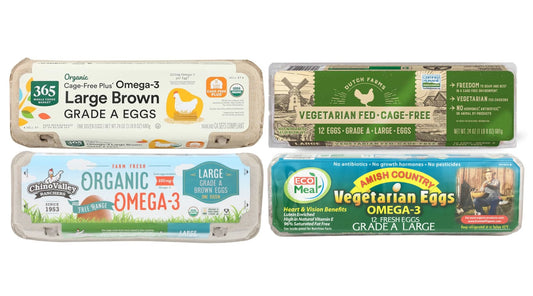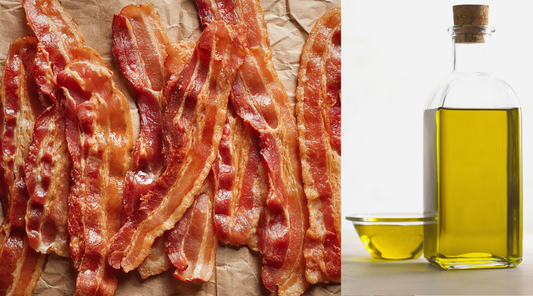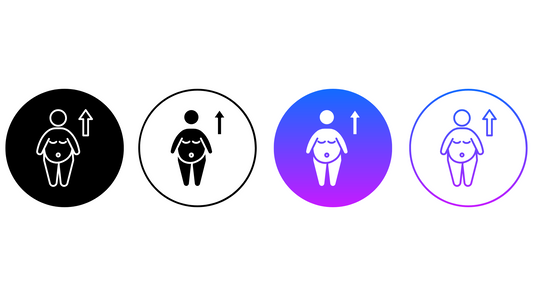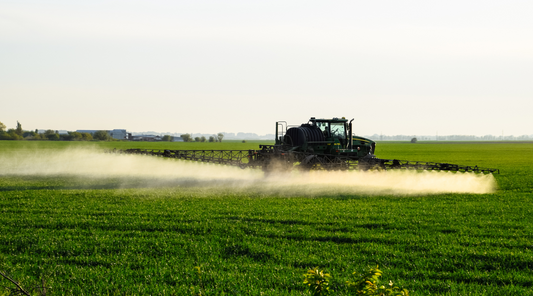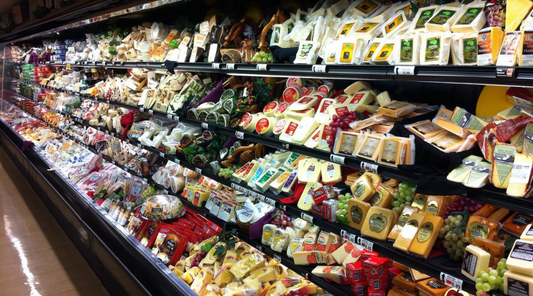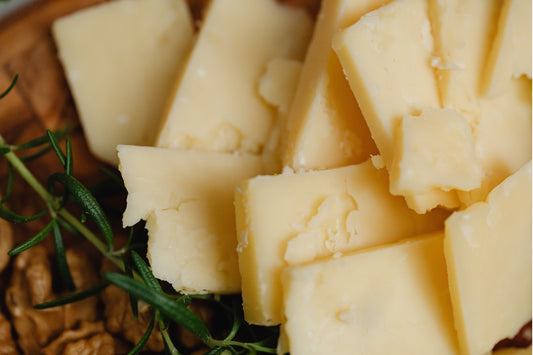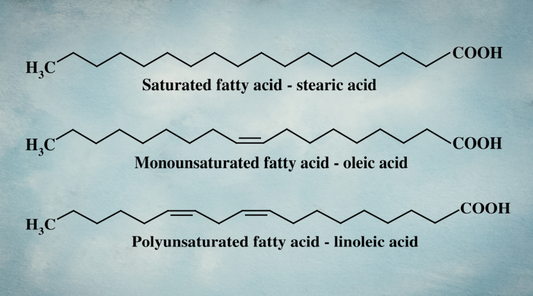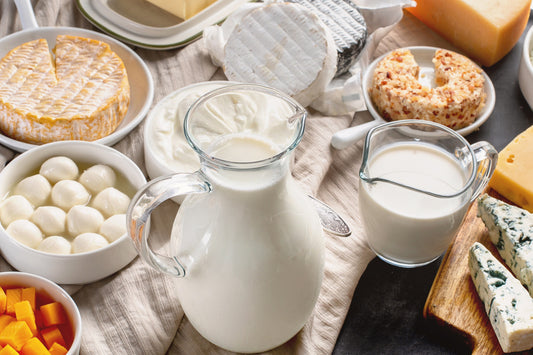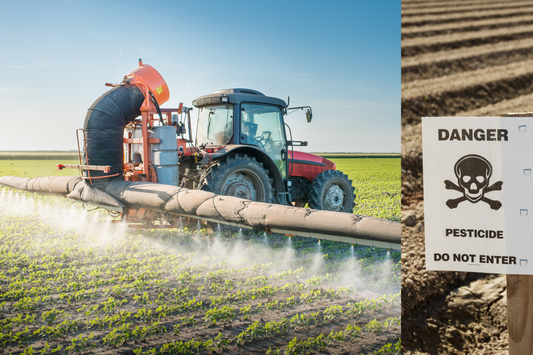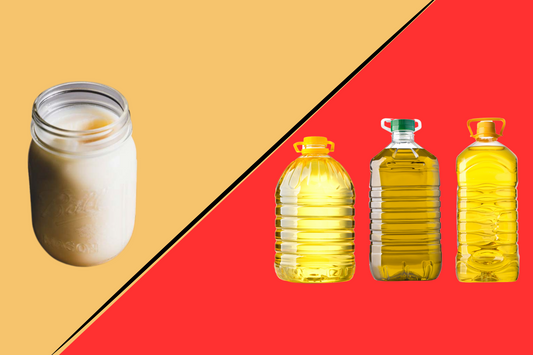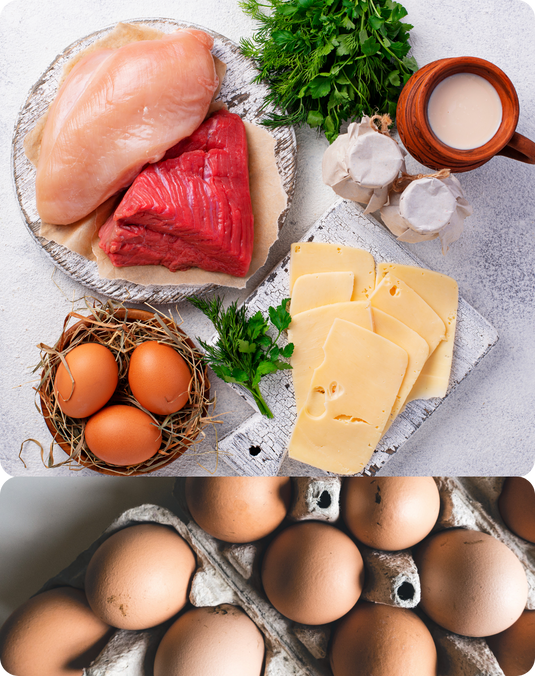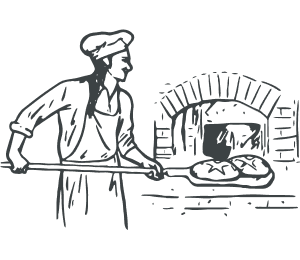
The Perfect Crime: How Big Pharma and Big Ag Keep You Sick and Dependent
America is facing a health crisis.
In the 1930s, just 7.5% of Americans suffered from chronic diseases.1 Today, that figure has surged by over 700%, with 60% of Americans now living with one or more chronic conditions.2 We are also fatter than ever - obesity rates have reached 40% and continue to climb. 3
Even more alarming, the U.S. is the only developed nation where both healthy life expectancy and total life expectancy are in decline4—a trend that began before COVID-19. In other words, we’re not living as long as our grandparents did, despite all of our technological advancements.

How did we get here? One answer lies in the disturbing parallels between Big Pharma and Big Ag—two industries that wield enormous power over our health.
The relationship between our food systems and our healthcare systems is no coincidence. Food is being produced in ways that undermine our health and keep us dependent on pharmaceuticals.
The business models of both the pharmaceutical and agriculture industries thrive on treating symptoms rather than addressing root causes, ensuring a continuous cycle of dependency.
-
Pharmaceutical companies profit immensely by focusing on symptom management instead of curing underlying conditions. Chronic diseases like diabetes or hypertension, for example, have become lucrative markets, as patients often require lifelong medication rather than one-time treatments.
-
Big Ag mirrors this approach. Farmers are locked into systems reliant on synthetic fertilizers, pesticides, herbicides, and genetically modified crops—inputs they must repurchase every season. Rather than restoring soil health or embracing regenerative farming, these practices perpetuate chemical dependency. (And fail to provide truly nutritious, health-promoting food).
Both industries promise solutions but often create new problems. In agriculture, pests develop resistance, leading to the need for even stronger chemicals. In healthcare, one medication’s side effects often require another drug to manage.
This cycle of dependency benefits corporations but leaves the rest of us sick, overmedicated, and struggling.
The unfortunate reality is that the power over our health is concentrated in the hands of a few corporations.
Understanding this connection between Big Ag and Big Pharma is the first step toward change.
By supporting alternative systems—whether regenerative agriculture or holistic health practices—we can begin to reclaim our well-being.
Bayer: Bridging Big Pharma and Big Ag
When exploring the overlap between Big Pharma and Big Ag, Bayer stands out as a stark example. As of December 2023, Bayer comprised 340 consolidated companies operating in 80 countries.56 Its vast reach ensures its influence spans nearly every aspect of health and agriculture, blurring the lines between industries that should prioritize health over profit.
Before Bayer acquired Monsanto in 2018, the two companies operated in separate realms. Monsanto was a powerhouse in agriculture, dominating the seed and agrochemical markets, while Bayer focused primarily on pharmaceuticals and consumer health products. The $63 billion merger merged these sectors, creating a global behemoth that exerts significant influence over both food production and health care.
This acquisition solidified Bayer’s dominance in agriculture. By 2018, Bayer controlled 18.2% of the global agrochemical market.7 Between 2018 and 2020, Bayer and Corteva collectively accounted for more than half of U.S. retail seed sales for corn, soybeans, and cotton. Globally, Bayer, Syngenta, BASF, and Corteva dominate the agricultural market, controlling a substantial share.8

This German multinational now operates across pharmaceuticals, consumer health, and agriculture - a structure that raises serious concerns.
Bayer’s pharmaceutical division spans several therapeutic areas:
-
Cardiology: Medications like Xarelto (rivaroxaban) treat blood clots, hypertension, and cardiovascular issues.
-
Oncology: Cancer treatments such as Stivarga (regorafenib) and Nexavar (sorafenib) address colorectal, liver, and kidney cancers.
-
Women’s Health: Products include hormonal contraceptives and treatments for menopause-related conditions.
-
Ophthalmology: Drugs like Eylea (aflibercept) combat macular degeneration.
Bayer’s consumer health division includes household names, reinforcing Bayer’s influence in everyday health decisions:
-
Allergy and Cold Remedies: Claritin and Alka-Seltzer.
-
Digestive Health: MiraLAX and Rennie.
-
Skin and Wound Care: Bepanthen and Canesten.
Bayer’s agricultural division, bolstered by Monsanto’s expertise, focuses on “crop science” and food production. While this may seem to serve public health by addressing food security, the reality is more complicated. Bayer’s focus on genetically modified seeds, synthetic fertilizers, and pesticides promotes systems of dependency that harm soil health and perpetuate chemical use.
Bayer’s dual role in pharmaceuticals and agriculture exemplifies how intertwined these sectors have become. The consolidation of power across both industries raises pressing questions about the health of people and the planet. Is it truly possible for one corporation to champion health while contributing to agricultural practices that undermine it?
Consolidation of Power and CR4: A Rigged System
The centralization of power in both Big Ag and Big Pharma has created systems that prioritize corporate profits over the health of people, farmers, and the environment. By examining the CR4 (Concentration Ratio of 4)—a metric that measures the market share of the four largest firms in an industry—we can see just how concentrated these industries have become.
The CR4 provides a clear picture of market competitiveness:
-
When the CR4 > 50%, the top four firms control more than half the market, suggesting significant concentration.
-
A CR4 > 80% indicates a highly concentrated, oligopolistic market.
-
A CR4 < 40% reflects a relatively competitive industry.
High CR4 values signify reduced competition, giving dominant firms significant power over pricing, policies, and market access, often at the expense of consumers and smaller players.
In the U.S. agricultural sector, CR4 values are alarmingly high, showcasing how a handful of corporations dominate key markets:
-
Beef Packing: From a CR4 of 25% in 1977, it soared to 85% by 2018.
-
Pork Packing: Rose from 33% in 1976 to 70% in 2018.
-
Broiler (Chicken) Processing: Increased from 34% in 1986 to 54% in 2018.
-
Seed Market: By 2023, BASF, Bayer, Corteva, and Syngenta controlled 95% of U.S. corn and 84% of soybean intellectual property.
-
Nitrogen Fertilizer (North America): CR4 stands at 77%.
-
Agricultural Machinery: The CR4 is approximately 60.8%.
Farmers are forced into a system where they have little choice over inputs, crops, livestock, or markets, and a system that encourages a “go big or go home” mindset to make the numbers work. This industrialized and concentrated setup marginalizes small farmers and alienates consumers from the family farms that grow their food. Meanwhile, biodiversity, rural communities, and soil health suffer as corporations push monocultures and chemical dependency.
While the pharmaceutical industry is slightly more fragmented, certain sectors exhibit high CR4 values:
-
Vaccines: Pfizer, GSK, Sanofi, and Merck control nearly 80% of the global market.
-
Diabetes Drugs: Dominated by Novo Nordisk, Eli Lilly, and Sanofi, with a CR4 of about 70%.
-
Oncology: The top four companies (Roche, Merck, BMS, and Novartis) control 45–50% of the market.
High CR4 values highlight a troubling reality: concentrated power creates a system ripe for market abuse. Whether it’s Big Ag controlling what farmers plant or Big Pharma deciding what treatments are available, these industries hold disproportionate power over our food and health systems.
The result? Consumers pay more, farmers earn less, and the broader systems we depend on—our health and our environment—continue to erode.
Government Funding: Reinforcing Unsustainable Systems
Both Big Ag and Big Pharma rely on government funding and policies that prioritize their profit-driven models. This institutional support not only perpetuates cycles of dependency but also manipulates public perception through lobbying and control of educational narratives.
Government subsidies unfortunately prioritize industrial farming practices, favoring monocultures that require chemical inputs to manage pests and maintain yields. Monocultures, with their lack of biodiversity, create environments where pests thrive, driving farmers to use more synthetic pesticides.
The Federal Crop Insurance Program guarantees minimum profits for farmers. While this reduces risk for farmers, it also drives up input costs as suppliers exploit this guaranteed revenue stream. With rising costs for fertilizers, pesticides, and machinery, farmers’ slim profit margins make them increasingly dependent on subsidies.
Subsidized crop insurance also incentivizes conventional farming methods over sustainable alternatives. Farmers are often required to use high-yield practices, genetically modified seeds, and chemical inputs to qualify.
This system rewards high-yield chemical-intensive farming and does not provide any financial incentive to pursue regenerative practices like crop rotation, no till, and cover cropping.
Subsidies help sustain chemical dependency in agriculture, so Big Ag companies want to make sure the subsidies stick around.
Healthcare policies mirror agriculture, prioritizing conventional methods while sidelining preventive care.
Health Insurance coverage focuses on medications, surgeries, and hospital visits but neglects preventive measures like nutrition, exercise, or alternative therapies.
Isn’t it so frustrating that your gym membership or chiropractor visits aren’t covered by “health insurance”?
Chronic diseases are often managed with pharmaceuticals, which treat symptoms but rarely address root causes.
This creates a cycle of dependency similar to agriculture, where conventional practices are perpetuated, leaving healthier alternatives underfunded and underutilized.
Manipulating and Controlling the Narrative
Both industries invest heavily in shaping public perception and regulatory outcomes through extensive lobbying.
-
In 2024, U.S. agribusinesses spent $32.7 million on lobbying to influence policies and regulations.9
-
The pharmaceutical and health products sector spent a staggering $294 million on lobbying efforts. 10
-
In 2024, Bayer spent $6.46 million on lobbying in the U.S. alone.11 [6]
-
In the EU, Bayer reported lobbying expenditures between €7 million and €8 million in 2023, the highest of any company.12
Both Big Ag and Big Pharma also influence educational curricula to align with their interests.
-
Textbooks often emphasize conventional farming methods, including synthetic pesticides, fertilizers, and GMOs, while giving less attention to sustainable alternatives.
-
Large agribusinesses shape agricultural programs at universities, promoting practices that support their products.
-
Pharmaceutical companies sponsor Continuing Medical Education (CME) programs for Doctors, promoting the latest drugs over non-pharmaceutical treatments.
-
Many medical textbooks are influenced by pharmaceutical companies, sometimes including advertisements or content that favors their products.
Companies like Bayer also shape public health narratives through educational campaigns about diseases such as cancer, cardiovascular conditions, and diabetes. While these campaigns raise awareness, they often steer solutions toward pharmaceutical products rather than holistic or preventative measures.
Both industries have created systems that…
-
Reward conventional, unsustainable practices.
-
Suppress alternatives through lobbying and narrative control.
-
Drive dependency on synthetic inputs and pharmaceutical treatments.
The foundation of their massive profits lies in creating perpetual dependency by focusing on symptom management which ensures a consistent revenue stream.
Cures, on the other hand, like addressing food choices and lifestyle habits, or implementing regenerative farming practices, would reduce long-term dependency, undermining the continuous profit model.
It’s undeniably a clever business model—though one that comes at the expense of our health and well-being.
Farmers and patients are not to blame! They are doing the best they can trying to navigate these difficult systems.
The structures themselves—bolstered by government funding and corporate influence—limit options for healthier, more sustainable alternatives.
Gut Health and Soil Health Parallels
The analogy between gut health and soil health highlights a deeper connection between the human health and agriculture industries.
Gut health is now scientifically linked to a wide range of chronic diseases (diabetes, autoimmune disorders, neurological disorders, digestive disorders, and more), highlighting the critical role of the gut microbiome in maintaining overall health
Just as a balanced, healthy microbiome is essential for human well-being, a thriving soil microbiome is crucial for producing nutrient-dense, sustainable food.

An imbalanced soil microbiome disrupts the essential ecosystem functions that sustain healthy soil, triggering widespread issues like pest invasions, nutrient deficiencies, and disruptions in natural carbon and water cycles. Over-tilled soil, deprived of organic matter, and inundated with chemicals like pesticides and synthetic fertilizers, causes the microbiome to destabilize. As a result, soil fertility and plant health decline, creating a greater reliance on harmful chemicals to maintain crop production.
Now imagine if you took an antibiotic every day. Over time, this could disrupt the delicate balance of beneficial bacteria in your gut, leading to digestive issues, weakened immunity, and overall health problems, right?
Well, the same effect occurs in the soil when we rely heavily on agrochemicals. Many of these chemicals function like an “antibiotic” to the soil microbiome, killing or suppressing beneficial microorganisms that are essential for soil health and plant growth. Without a thriving community of beneficial microbes, the soil becomes less resilient, more prone to pests and disease, and less effective at absorbing water and nutrients. Over time, this leads to a dependence on even more chemical inputs to maintain productivity, much like how the overuse of antibiotics can lead to the need for stronger medications to manage infections.

Image from13
Just as enhancing gut health reduces our reliance on pharmaceuticals, improving soil health is essential to reducing the dependence on toxic chemicals in agriculture.
Plus, these two microbiomes are deeply interconnected—healthy soil supports nutrient-dense crops, which, in turn, positively impact the human microbiome.

Intellectual Power and Seed Saving
The parallels between the agricultural and pharmaceutical industries become even more apparent when examining their approach to intellectual property (IP) development. Both industries profit by creating so-called “novel” products marketed as innovations to “improve our health.” This IP focus puts a heavy emphasis on technological solutions, often at the expense of more sustainable, natural alternatives.
In reality, these efforts often center on market domination and securing exclusive access to resources, ensuring their control and profitability rather than prioritizing genuine health or sustainability.
In agriculture, seed saving was a longstanding tradition that allowed farmers to preserve crop diversity and maintain independence. By saving and replanting seeds each year, farmers ensured they had access to crops suited to their local environments.
However, with the advent of patented genetically modified (GM) seeds from companies like Bayer and Monsanto, this practice has been largely undermined. These corporations not only patent the seeds but also often bundle them with the requirement to buy proprietary herbicides, pesticides, and fertilizers, creating a “package deal” that traps farmers into a cycle of dependence.

Image from 14
The widespread use of GM seeds has led to monoculture farming, where large tracts of land are dedicated to a single crop. This practice is vulnerable to pests, diseases, and soil degradation, increasing the need for toxic chemical interventions. At the same time, the consolidation of the seed industry into a few powerful corporations has raised seed prices, limiting access for small-scale farmers and pushing out traditional varieties in favor of commercial crops designed for high yields, not biodiversity.
The large-scale adoption of monoculture farming truly began around 1950, driven by the Green Revolution. This period saw the introduction of high-yielding crop varieties, chemical fertilizers, pesticides, and modern irrigation techniques, which significantly shifted farming toward monoculture. It revolutionized agriculture, especially in developing countries, with crops like wheat, rice, and corn being grown in vast, uniform fields to maximize production. Prior to this, farming systems were more diverse, incorporating a mix of crops and livestock. Practices such as crop rotation, polyculture, and pasture-livestock integration were common and contributed to nurturing the soil microbiome.
While some claim that industrial agriculture is necessary to feed the growing global population, the reality is that we already produce enough food to feed 1.5 times the world’s population15. The problem lies in food distribution, waste, and political barriers that prevent nourishing food from reaching those who need it most.
Big Ag invests heavily in synthetic and technological solutions—such as genetic engineering, precision agriculture, and chemical treatments—that can be patented, protected, and profited from. These innovations often prioritize short-term yield increases without regard for the long-term health of the soil or ecosystem. In contrast, natural farming practices like agroecology and permaculture, which focus on biodiversity and ecosystem balance, can’t be patented. After all, you can’t dominate markets when you work in harmony with Mother Nature!
This shift in focusing on IP and tech solutions over natural methods mirrors the situation in the pharmaceutical industry. Just as agricultural giants control the seed market through patents and proprietary technologies, pharmaceutical companies like Pfizer, Merck, and Johnson & Johnson hold patents on “life-saving” medications, limiting access to affordable alternatives. Generic drugs often face barriers due to patent protections, and smaller producers struggle to compete with these industry giants.
Big Pharma “innovation” is primarily focused on developing new drugs, therapies, or medical devices, frequently overlooking low-cost, lifestyle-based interventions that they can’t profit from (like dietary, lifestyle and exercise improvements).
In both sectors, the focus has shifted away from independent solutions to a reliance on corporate-controlled products. For agriculture, it means dependence on GM seeds and chemicals; for healthcare, it means reliance on patented pharmaceuticals. This model ensures a continuous revenue stream but limits the exploration of more holistic or alternative approaches—whether that’s crop rotation and heirloom seeds in farming or preventive care and natural treatments in medicine.
How to Make Real Change
The current systems in both healthcare and agriculture are designed to ensure that corporations profit at the expense of public health and sustainability. These industries prioritize efficiency, profit, and corporate control, rather than the long-term well-being of people or the planet.
Just as access to non-GMO or heirloom seeds becomes more limited and expensive in agriculture, alternative healthcare treatments often face similar barriers. Natural remedies or integrative approaches are often excluded from insurance coverage or priced out of reach, much like organic or heirloom crops are more expensive than their conventional counterparts.
Now don’t get me wrong - Technology and efficiency improvements are important, and pharmaceutical and chemical interventions do have their place! However, it’s clear that our current approach involving heavy reliance isn’t working. We rely on these solutions for short-term relief, but they often come with long-term consequences.
In agriculture, the focus is on high-yield, chemical-intensive farming that sacrifices biodiversity and soil health. In healthcare, the emphasis is on symptom management through drugs, rather than addressing the root causes of illness.
Both industries are becoming dangerously consolidated, limiting choice, increasing costs, and deepening a cycle of dependency on corporate-controlled solutions.
Real change won’t come from the top down, as entrenched corporate interests hold too much power. It will come from the bottom up—through consumers, patients, and farmers making conscious decisions to support a healthier, more sustainable future.
The alternative is clear: regenerative farming that nurtures the land and promotes biodiversity, paired with a healthcare system that empowers individuals through preventative, holistic approaches.
We have the power to make a difference. By supporting farmers or farm cooperatives who embrace regenerative practices and avoiding food produced with harmful chemicals, we can drive a market shift toward healthier, more sustainable food. Likewise, by taking control of our health and focusing on prevention—through proper diet, exercise, and stress management—we can reduce our dependence on pharmaceutical drugs.
The change we need starts with us. By choosing to invest in regenerative agriculture and preventative healthcare, we can break free from the systems that profit from our dependency. Together, we can build a future where health and sustainability take priority over corporate control.






